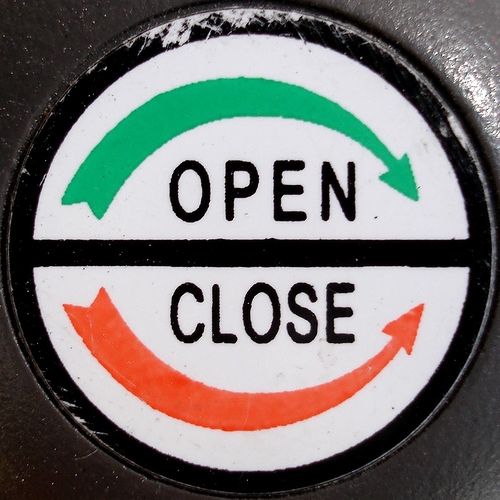This guest post is by Warwick Hunter, Access Policy Officer at State Records NSW.
Are you thinking of putting some of your collection online? Have you already uploaded photos to sites like Flickr? Deciding what and how you put material online presents a set of issues a little different from mounting an exhibition or providing access on site.
With the growing variety of avenues for providing access to records on the internet, collecting and cultural organisations have thrown themselves into:
- digitisation programs
- online galleries
- online catalogues/indexes
- using social networking sites and tools like Flickr and blogs.
How to start online
The place to start for many organisations when first putting material online is photographic collections. You need look no further than Picture Australia to see the breadth of organisations, from historical societies to major national institutions, that have opened parts of their photographic collections to the world.
There is also ‘The Commons’ section on Flickr to get an idea of how popular promoting and providing online access to photo collections has become around the world.
While it may appear many of these galleries and photo streams do not display the same curatorial or editorial level of a traditional exhibition or publication they belie the negotiation and decision making that can be involved.
Relinquishing control
‘The Commons’ highlights one of the issues organisations need to consider when making records available online; control over the material. The material presented by the institutions in ‘The Commons’ must be without known copyright restrictions and allowed to be used, distributed and copied without the need for permission from the holding institution and or copyright holder. Are you ready to give up control?
Even when an organisation places restrictions on the use of online material, either by citing copyright obligations or using low resolution copies, it is really relying on the kindness of strangers. To continue to insist on control, especially for material out of copyright, in an effort to maintain the integrity, including ‘proper’ use of the material, could be asking for a damp trouser leg.
Copyright
Complying with copyright legislation appears straightforward when managing access and copying in a reading room. Copying material for a third party on site you often fulfil your responsibility under the research and study provisions of the Copyright Act 1968 and by simply pointing out a client’s responsibility if they want to publish or broadcast material. Now many organisations are themselves the publisher or broadcaster of copyright material. You must ensure you have the authority to administer the copyright. If you don’t have the authority you may need to consider developing a risk management policy when selecting material to put online.
Selecting material

Then there is the question of suitability. Just because material can be accessed, under donor agreements or relevant legislation, on site doesn’t always mean it is appropriate to make it available online. Deciding whether something is suitable or not can be a tricky affair. People and institutions can hold very different opinions on what is acceptable. You can find yourself looking at moral rights, ethics, and subjective questions of taste.
As an example, at State Records we hold an extensive collection of photos from the former Aborigines Welfare Board. They are open to public access and available for inspection in our reading rooms. The photos capture moments in the lives of generations of Aboriginal people who were removed from their families and communities.
To those people captured in the photographs, and their families, these photographs often represent a harrowing and painful time. Without consultation with individuals and communities we believe these photographs are not suitable to be put online. Such consultation was part of the development of In Living Memory exhibition.
Other institutions may have consulted or have different views as some photographs from similar institutions are available online.
In our current climate issues relating to the depiction of children also raise questions. The variety of reactions and decisions relating to child nudity can be seen in the reaction to a nude sculpture http://www.smh.com.au/articles/2009/10/26/1256405349832.html and the availability of an image from an online collection http://www.slv.vic.gov.au/pictoria/gid/slv-pic-aab82376/1/b25356.
Self-censorship
After control, copyright, moral and ethical issues, organisations can also find themselves self censoring on the very subjective issue of taste. What is the purpose of putting material online? Is it in part to get attention and if so at what lengths are some organisations prepared to go in search of the quirky, offbeat, humorous or dark material to get noticed? Are the records, particularly photographs, informing and providing context to collections?
We are told we have become desensitised to images of death and violence through other media. So is it just a matter of taste to find this online image http://collection.hht.net.au/firsthhtpictures/picturerecord.jsp?recno=31240 a little morbid?


Damien Hassan says:
This post raises a whole bunch of really important issues which don’t seem to get enough debate. For me, the key issue is: if an archive is openly accessible (i.e. in the Search Room), why shouldn’t that archive be accessible online, copyright issues aside? There seems a strange irony at work here: are all open access archives are accessible, but some are more accessible than others? Archivists have a responsibility to provide access to archives without discrimination or preferential treatment – does Search Room access only set up a scenario of preferential treatment, discriminating against those not in a position to visit the Search Room? I don’t think there are easy answers to this matter, but I’d be interested to read any other thoughts on this.